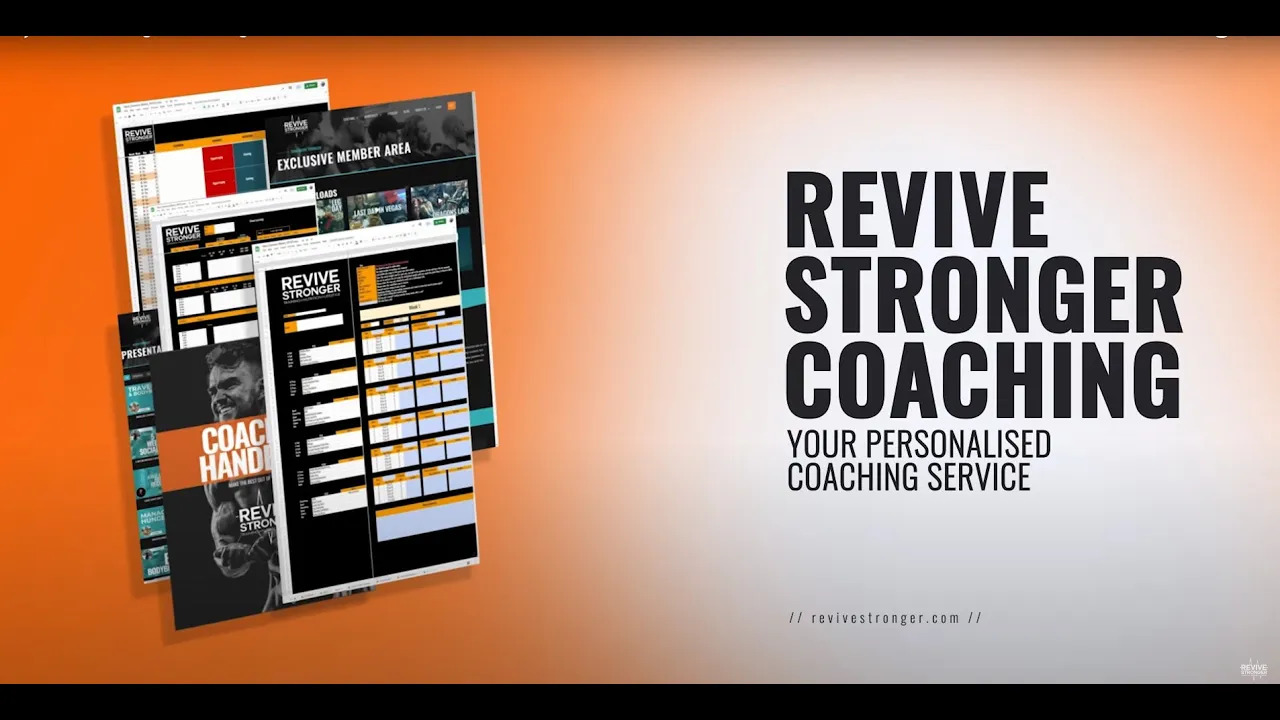
Revive Stronger
Advanced Bodybuilding Techniques [Occlusion Training]
![Advanced Bodybuilding Techniques [Occlusion Training]](https://revivestronger.com/wp-content/uploads/2015/12/occlusion-1024x665.jpg)
Last weeks article went down like a storm:
11 Gifts Every Serious Powerlifter should have on their Christmas List – (& why)
And because of the positive feedback I wanted provide you the bodybuilder with a tool to take your training up a gear in the new year. So today I introduce to you occlusion training, or blood flow restriction training as many call it.
Although if you haven’t read last weeks article I do recommend you go back and have a look, because even as a bodybuilder you like to lift heavy things right? These gifts will aid you to do just that.
Table of Contents
What is Occlusion Training?
This type of training is not actually a torture method, although some might argue differently. You’ve probably experienced blood flow restriction before in hospital. As often when they’re taking blood they use a cuff that constricts blood flow to control venous and arterial circulation to an extremity for a period of time. Basically they constrict blood flow and cause a limb to be temporarily occluded, causing a build up on blood.
They’re also used in the medical field to help prevent muscle catabolism even without lifting a single weight. Today I am going to tell you how and why you might want to use them in your training.
Why should a Bodybuilder do it?
I can see you now “But Steve, why the hell would I want to do this?” and I had the same reaction when I first heard about this training being used by bodybuilders. So let me explain; one of the ways we grow muscle mass (hypertrophy) is via metabolic stress, typically this is experienced as ‘the pump’. Another mechanism of hypertrophy is mechanical tension, which is essentially lifting heavy loads.
The American College of Sports Medicine recommended ~60% to 100% of 1-RM as the resistive load necessary to induced adaptational characteristics such as muscular strength, hypertrophy, and to some extent, absolute muscular endurance [6]. However, resistance training in combination with occlusion training may induce similar expression of adaptational characteristics as high intensity resistance training, but at considerably lower intensities (20% to 50% of 1-RM). That is pretty damn exciting.
[bctt tweet=”Get the benefits of lifting heavy by lifting incredibly light”]
Let’s look into how.
1) Achieve an incredible Pump
You’re doing your high repetition bicep curls, you can feel the muscle filling with blood, this is the pump. This causes metabolic stress; we see a build up of metabolites, these then in turn indirectly mediate cell signalling for muscle growth. Furthermore we experience increasing water within the muscle, this causes the muscle cells to swell and it is thought that this acts as a stimulant for the growth of muscle, as the cell reacts to reinforces its structure.
I talk about the mechanisms of hypertrophy in-depth in Get Big, Stay Lean and here you can think of someone punching you in the gut, sure they might get you the first time, but the next, not a chance, you’re on guard, hands up; you adapted, grew and reinforced your structure, much like the muscle cell.
OK so what has this got to do with occlusion training you ask, well research on patients confined to bed rest show that metabolic stress induced by the application of a pressure cuff can help attenuate muscle loss, even without lifting a single weight. Furthermore, it has also been found that pressure-cuff exercises performed with very sub-max weights can promote significant muscle growth as a result of generating lots of metabolic stress.
So restricting blood flow is having an anabolic effect, much like that we get when we lift to get the pump, pretty neat huh?
It is thought this is a key reason Bodybuilders are bigger than Powerlifters, this sort of training promotes sarcoplasmic hypertrophy (otherwise known as ‘non-functional’ hypertrophy) it is the increase of non-contractile elements. Powerlifters who focus on the lower rep ranges simply do not get the pump, and so do not maximise their hypertrophy like a Bodybuilder would.
2) Get the Benefits of Heavy Weights without the Heavy Weight
Occlusion training was originally developed in Japan where it is better known as KAATSU training and it allows you use a much lighter weight and get similar benefits as lifting far heavier. Sounds too good to be true right? Well it has been found that you can increase muscle size and strength using loads as light as 20% of a 1 rep max [1].
It is therefore a really nice way to still get muscle growth even when you cannot or are not using heavy loads.
This is because we actually see growth of our fast-twitch muscle fibres, which under normal circumstances would require high-intensity resistance exercise. Fast-twitch muscle fibres have a greater capacity for growth, and so it is commonly thought that when programming for muscle growth and strength, intensities lower than 65% of 1RM are not effective. Clearly this is not the case with occlusion training.
Slow twitch muscle fibres are used when performing higher reps, because we can perform them aerobically, allowing oxygen to be used. However, occlusion training gets around this, as it restricts blood flow to muscles, thus starving them of oxygen, this therefore requires the anaerobic fast twitch fibres to switch on even at these lower intensities. So your muscle is receiving a similar training effect, just with much lighter weights [2].
[bctt tweet=”Occlusion Training – receiving a similar training effect, just with much lighter weights”]
Check out Natural Pro Bodybuilder performing Blood Flow Restriction Training and explaining why he is using it:
Low-intensity occlusion training has been shown to be beneficial to athletes [2], patients in postoperative rehabilitation specifically anterior cruciate ligament (ACL) injuries, cardiac rehabilitation patients, and the elderly.
Specifically for you the bodybuilder it can provide a break from all the stress associated with high-intensity resistance training, and result in a positive training adaptation, although causing little to no muscle damage.
So low-intensity occlusion training offers a unique beneficial training mode for promoting muscle hypertrophy. The fact you can train at intensities of only 20% 1RM and receive the equivalent benefit of training at 65% 1RM is a real positive for a variety of anyone who physically cannot handle any or more high mechanical loads.
How to Perform Occlusion Training
So you want to get into Occlusion Training but you’re not sure how? Well you’re not the only one, because I actually have medical tourniquets on my christmas list, I’ve never done occlusion training. Therefore the method I am quoting is the one most commonly used in the literature [3].
This type of training is not for the faint hearted, yeah sure the weights are extremely light but when you get into it, you will realise just how hard it is.
According to Layne Norton (a world record holding powerlifter and professional bodybuilder) it is easily the most painful form of training he has ever performed.
As you know we are attempting to restrict blood flow into a muscle, causing it to pool in the limb for the duration of an exercise, this is done using a cuff or in our case a medical tourniquet or knee wrap. So a lot of blood is going into the muscle, but not much is coming out.
Which muscles can it be used for?
- Thighs
- Calves
- Upper arms
- Forearms
Tools needed
- Medical Tourniquets – upper arms, forearms
- Elastic Knee Wraps – thighs, calves
Occlusion Training Step by Step
- To occlude the thighs or calves wrap around the uppermost part of the thigh, to occlude your arm or forearm wrap around the uppermost part of your arm. If you are in pain before you start, the wraps are too tight, aim for around 70% tightness.
- Perform 30 reps followed by 3 sets of 15 reps with a load that is 20 to 30% of 1RM (if you’re missing reps then it is likely you have wrapped too tight).
- Use a tempo that is controlled, 2 second eccentric and 2 second concentric.
- Rest periods should be very short (around 30 to 60 seconds).
- Only after the final set remove the wraps and restore blood flow to the muscle.
This prevents blood flow return from the muscle and thus the blood pools in the muscle, creating a massive pump. Again, this should not be easy, or comfortable, and that is why I said some call it torture. Layne points out if it isn’t painful the odds are you didn’t make the restriction tight enough.
Programming Occlusion Training
So now you know what Occlusion is, the benefits it provides and how to perform it, lets look at how one might go about programming it.
First remember, you have to think about the whole context of your training programme, you can’t just add in occlusion training willy nilly and expect to see better results. I always say more isn’t better, better is better and by just adding in occlusion training on top of your current programme without making any adjustments is a bad idea.
I’m going to give you some suggestions:
- If you have an injury that prevents you lifting heavy.
- For muscle groups you are particularly trying to bring up.
- During your Hypertrophy blocks at the end of your workout.
- Two to Three times weekly for the same muscle groups [5].
- When you’re beat up, such as during a prolonged calorie deficit.
- For weaker muscle groups that you want to bring up, but still allow adequate recovery.
I would always use it as an accessory, a tool in the tool box as Alberto Nunez says, it is a great way to keep muscle and strength training in your programme while allowing you to recover.
Side Note – Safety Issues
Obviously when considering any new training method you need to take into account the potential negatives, especially when it comes to something on the more extreme side like this. Nakajima et al. [4] surveyed over 100 facilities that utilise occlusion exercise in order to determine the incidence of adverse events in the field.
The authors reported that nearly 13,000 individuals (age range; ≤ 20 to ≥ 80), with a variety of different physical conditions utilized BFR exercise. The incidence of side effects were as follows; cerebral anemia (0.277%), venous thrombus (0.055%), pulmonary embolism (0.008%), and rhabdomyolysis (0.008), deterioration of ischemic heart disease (0.016%). However, BFR exercise resulted in the following incidence of temporary side effects, including; subcutaneous hemorrhage (13.1%), numbness (1.297%), and cold feeling (0.127%); likely due to compression to musculature and peripheral nerves.
To quote Brad Schoenfeld et al:
“Research examining the safety of BFR exercise/ training has thus far concluded that BFR exercise is a safe and novel method for training athletes, healthy persons, and potentially those individuals with varying comorbidities” [5].
[bctt tweet=”Research examining the safety of occlusion training has so far concluded that it is a safe and novel method for training athletes”]
Occlusion Training in Summary
-
Occlusion training uses the application of pressurised cuffs to restrict blood flow to a desired region, using loads of 20 to 30% of 1RM.
-
Low-intensity occlusion training offers a unique beneficial training mode for promoting muscle hypertrophy of both slow and fast twitch muscles via metabolic stress and mechanical tension.
-
Best suited for time when you cannot tolerate the large mechanical loads imposed during high intensity resistance training.
So what are you waiting for? Get wrapping your limbs and get that pump you’ve always dreamed of with Occlusion Training.
References
- Loenneke JP and Pujol TJ. The Use of Occlusion Training to Produce Muscle Hypertrophy. Strength & Conditioning Journal. 31(3): 77-84, June 2009.
- Takarada Y, Takazawa H, Sato Y, Takebayashi S, Tanaka Y, and Ishii N. Effects of resistance exercise combined with moderate vascular occlusion on muscle function in humans. J Appl Physiol 88: 2097–2106, 2000.
- Loenneke JP. Personal Training Quaterly. Volume 1. Issue 2. National Strength and Conditioning Association 2014
- Nakajima, T, Kurano, M, Iida, H, Takano, H, Oonuma, H, Morita, T, et al. Use and safety of Kaatsu training: Results of a national survey. Int J KAATSU Training Res 2: 5-13, 2006.
- Brad J. Schoenfeld, Zachary K. Pope1 Jeffrey M. Willardson1. A BRIEF REVIEW: EXERCISE AND BLOOD FLOW RESTRICTION. Journal of Strength and Conditioning Research Publish Ahead of Print DOI: 10.1519/JSC.0b013e3182874721
- American College Of Sports Medicine. Progression Models in resistance training for healthy adults. Med Sci Sports Exerc 41: 687-708, 2009.
We are a personal coaching service that helps you achieve your goals. We want you to become the best version of yourself.









Comments are closed.